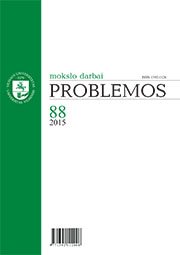
“NEUROSCIENCE IS RELEVANT FOR PHILOSOPHY”
Professor Patricia S. Churchland interviewed by Bruno Mölder
More...We kindly inform you that, as long as the subject affiliation of our 300.000+ articles is in progress, you might get unsufficient or no results on your third level or second level search. In this case, please broaden your search criteria.

Professor Patricia S. Churchland interviewed by Bruno Mölder
More...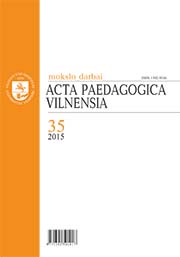
The analysis of scientific literature shows that in Lithuania people with epilepsy face a high risk of social exclusion, and there is a lack of research in which the psychosocial aspects of epilepsy and the possibilities how to optimize the social inclusion of people who suffer from epilepsy would be explored thoroughly. Furthermore, there is no systematic approach to the problem of social exclusion itself, an interdisciplinary work and innovative methods are not integrated into the practice fully. Thus, the problem of the research is actualized by the question – what are the possibilities of applying music therapy in order to optimize the social inclusion of people with epilepsy? A qualitative case study was carried out in order to solve this problem. The results of the study are presented in the form of analysis and interpretation of the social inclusion experiential learning process (a total of 20 sessions) of the music therapy group consisting of 7 adults with epilepsy, and their outcome. The study data consist of the public documents, transcriptions of the group members’ reflections on the activities and audio recordings of the musical improvisations of the group. The data were also collected while observing the process. Musical improvisations were analysed by the application of the phenomenologically inspired microanalysis method and the qualitative content analysis method, was used for the analysis of the reflections. The review of the main theoretical provisions and concepts of the study at the theoretical level allows an assumption that the social inclusion incentive of the people with epilepsy may be encouraged by experiential learning through participation in an experiential learning community (the music therapy group). The amplification of social inclusion shall be attributable to the dynamics of the group members’ participation from the legitimate peripheral towards centripetal (according to Lave, Wenger, 1991). Such a process of change allows the personal development of capacities that help to overcome the participation problems caused by the illness and to realise social agency, thus becoming an active and full-fledged community member. For the purposes of the study, this social inclusion amplification mechanism has been analysed in the context of musical improvisation by attributing to that improvisation the function of community building and consolidation of the membership in it. The interpretation of the microanalysis results of the improvisations (a total of 10 improvisations) confirmed that a sufficiently high degree of social inclusion was reached when improvising in the group. The indications of the above (to be linked with subjective experience while improvising) are as follows: the intensification of positive energy, the feeling of being legitimate and full-fledged members of the group, the sense of solidarity and sociality. Furthermore, the following capabilities demonstrated by the members of the group while improvising were identified: empathy, responsibility, flexibility of the participation, imagination and creativity, tolerance (forbearance), independence and decision-making, proactiveness, solidarity and cooperation, genuine self-esteem and self-confidence. The interpretation of the results of the qualitative content analysis based on the reflections that were relevant to the study identified the following conditions / situations that were created for the personal development of the above listed capabilities: practical experience, confrontation, community experience, spatiality of the participation, acquiring power, overcoming the fear of making mistakes, involvement in the process, meeting the challenge, breaking stereotypes. The interaction of the capabilities and the conditions / situations for their personal development is synergistic. Its effect is the abolition of the barriers to participation giving rise to the implementation of social agency. The re-implementation of social agency is to be treated as an indication of the amplification of centripetal participation that in turn represents an increase in the degree of social inclusion. The presented research opens a perspective for various initiatives of social inclusion of people with epilepsy and outlines the guidelines for the further research in this area. It would be important to investigate: 1) correlations between capabilities demonstrated by the members of the group and environmental conditions and situations, 2) transferability of the capabilities demonstrated by the members of the group and the conditions and situations created in the group for the development of the identified capabilities to the broader social context, 3) the impact of music therapy on the treatment of epilepsy, including neurophysiological and / or neuropsychological aspects of the disease.
More...
The present work indicates that changes in the study of memory continue at a rapid rate, perhaps exponentialy, but the basic structure of human's memory is always constant. we know that memory actually is not such an entity at all, but rather an aspect of the functioning of a complex information processing system. Items of information-words, propositions- are fed into the system and, in a sense, are later retrieved. However, we have no reason to think that between input and output the words or propositions are stored in specific locations somewhere in the head.
More...
A small group of elementary school students (age 10.4 to 13.10 yrs) with specific developmental disability of scholastic skills (app. F81.0/81.3 according to ICD-10) was retested by REVISK (locally standardized approximate of WISC-III) within, in average, 3 yrs post diagnosis, for detecting possible changes in their general ability performance. REVSIK measures were adjoined by 3 and 4-factor schemes proposed by Kaufman and Bannatyne. The results have indicated significant decline of the total IQ score (average difference=-3.0, t=2.434, df=24, t=2.434, df=24, t<0.05), intra-subtest variability on the verbal subscale (-1.3, t=2.397, df=24, p<0.05) and Bannatyne’s factors of Acquired Knowledge (-1.5, t= 4.375, df=24, p<0.01) and Spatial factor (-0.6, t=2.701, df=24, p<0.05). No homogenous subtest profiles were detected in original either repeated testing. The results and implications for the future studies are discussed against the background of contemporary theory and research in this field, as well as of empirically-based constraints in recognizing this population in a local setting.
More...
In the proposed article we tackled the issues of sustainable development in the context of disorders classified in ICD-10. We used the empirical method using proprietary tools and psychology tests. The research material was subjected to statistical analysis. The results are presented in the article.
More...
Review of: Anna Timková Lazurová - RUSŇÁK, R. – BACHUROVÁ, T.: Tematika straty, smrti a bolesti v literatúre pre deti a mládež a jej didaktická interpretácia v primárnom vzdelávaní. Prešov: Pedagogická fakulta Prešovskej univerzity v Prešove 2021. 173 s. ISBN 978-80-555-2683-6
More...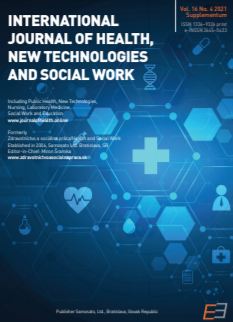
Introduction: The WHO declared COVID-19 a pandemic and a threat to international public health. Many countries are monitoring post-covid syndrome and looking for solutions to prevent the consequences of COVID-19. The pandemic is a serious health and socio-economic problem. Research objectives: Protecting the population from COVID-19 and its consequences requires clinical, diagnostic and epidemiological studies. COVID-19 severely affects the nervous system. It is essential to prevent complications and consequences of the disease. Core of Work: The presented article focuses on consequences of the pandemic on the nervous system. We compare the impact of Spanish influenza and COVID-19. Clinical symptoms of nervous system disease associated with COVID-19 and the effects of coronavirus on the nervous system lead to neurological and psychiatric diseases. It is currently possible to predict the consequences of COVID-19 pandemic by artificial intelligence. COVID-19 models have difficulties coping with the new situation. In addition to the potential for passive treatment based on immunity using antibodies collected from the plasma of cured COVID-9 patients, there is ozone therapy. Post-covid rehabilitation is necessary in the elimination of secondary neurological complications. The use of virtual reality in the rehabilitation process has a particularly motivating effect on the patient. Conclusion: From the current publications dealing with the post-covid situation, it is important to identify the possible consequences of COVID-19 such as post-covid syndrome, neurotic post-traumatic and neurodegenerative diseases, loss and reduction of cognitive functions.
More...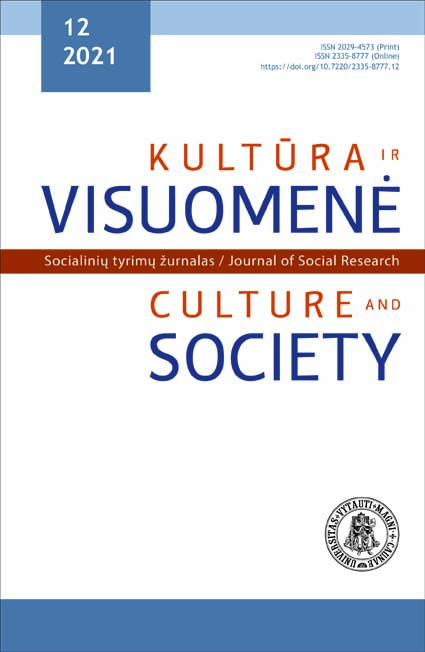
In contemporary studies of parenting, culture academics have shown huge interest in the phenomenon of neuro-scientific motherhood and neuroparenting, which has predominantly focused on a child’s brain plasticity and vulnerability, and parents – especially mothers – as primary caregivers and brain-builders (Apple, 1995; Bruer, 1999; Macvarish, 2016). Neuroscience is the most influential field of science that forms contemporary concepts and practices of parenting and child-rearing during the first three years of childhood (Hays, 1996; Macvarish, 2016; Rawdin, 2019; etc.) The theoretical basis of the article is the social critique of neuroparenting given by sociologist Jen Macvarish. In her book “Neuroparenting: The expert invasion of family life”, Macvarish discusses the neurocentric approach to children, parenting and family life. The social critique of neuroparenting given by Macvarish is particularly relevant when it is linked to children with atypical neurological conditions, such as autism. Therefore, the article seeks to show that neuroparenting lacks a broader socio-cultural context, as it focuses only on neurotypical children with normal neurological development, but does not include other conditions of neurodiversity. The article discusses the following aspects of neuroparenting: “the myth of the first 3 years”; the argument “ do more and do it earlier”; and the expectation constructed by experts – “you can have a child that you want”. These are later combined with empirical data, i.e. 34 semi-structured interviews with parents raising autistic children. The article argues that the subjective experiences of neuro-motherhood/fatherhood not only embodies the many aspects of neuroparenting, but also expands the socio-cultural context and reflects a much broader socio-cultural context of the contemporary neuroparenting movement. It also supplements Macvarish’s social critique of neuroparenting with new empirical arguments from the perspective of neurodiversity.
More...
The current study aims to present the main lines of the topic by compiling the literature on the effect of emotion on recognition memory and address some considerations for future studies by highlighting the attention-grabbing points related to emotion-memory interaction. A growing body of literature has demonstrated that emotional stimuli are better remembered than their neutral equivalents. Based on these common findings, research in the relevant literature is reviewed in detail regarding various approaches that define and explain emotion; and the effect of emotional dimensions, which are defined within the framework of different approaches, on recognition memory is mentioned. Empirical studies are also reviewed by including the findings on the response biases that emotion might cause. On the other hand, the factor affecting memory performance is not solely due to emotional stimuli' dimensions. Instead, memory performance might be positively affected by the context of emotional stimuli. Additionally, how emotional memory is studied in a controlled laboratory setting is discussed. Within this context, emotional databases developed to investigate emotion-memory interaction and databases designed for research to be carried out in Turkey are discussed. To sum up, within the scope of the current review, it is concluded that future studies on emotion and recognition memory interaction should take response bias caused by emotion, emotional context, and type of emotional stimuli into account to reach more consistent results.
More...
Age of acquisition refers to the age at which a specific word is learned for the first time. Research shows that age of acquisition is a significant variable in lexical processing tasks. The age of acquisition effect emerges from how information is stored and accessed in the brain and is used to seek answers to theoretical and practical research questions about the mind. For example, studies in the clinical psychology field show that the age of acquisition effect differs in participants with brain damage or neurological disorders (e.g., Alzheimer's disease, aphasia, semantic dementia, and dyslexia) compared to participants without these disorders. Research in neuroscience shows that early and late acquired words are associated with different brain activations. Although it has a long and rich history in international literature, there are very few empirical studies on the age of acquisition effect in Turkish literature. In this review, basic findings and theories are discussed, and the subjective and objective procedures of collecting age of acquisition norms are presented comparatively. After examining the theoretical and methodological issues in the field, the application areas of the age of acquisition, including clinical psychology, neuroscience, and second language acquisition, are discussed, and suggestions for future studies are presented.
More...
Emotional stimuli are processed differently in memory with respect to neutral stimuli; because they are more distinct, salient, and biologically significant. Episodic memory is about remembering the events as related to each other. In everyday life, because of the nature of episodic memories, emotional and neutral stimuli are exposed together, not separately. Thus, emotional stimuli become related to nearby neutral stimuli and affect their processing. In the emotional episodic memory literature, how emotional stimuli affect episodic memory processes about neutral stimuli has been widely studied. In addition to the approaches arguing this effect is either enhancing or weakening, there are also other approaches suggesting that it is selective. This selective effect emphasizes that emotion might enhance or weaken the memory for neutral stimuli with respect to different occasions. In addition to the item memory for nearby neutral stimuli, emotional stimuli have effects on the associative memory established with these stimuli. Research has shown that emotional stimuli affect item and associative memory in different ways. In summary, this review tries to analyze emotional episodic memory literature in the scope of neutral stimuli. For this aim, how emotional stimuli affect episodic memory for nearby neutral stimuli is evaluated extensively.
More...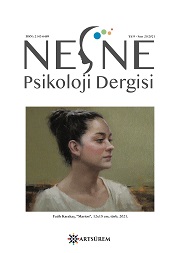
The present study consists of two separate experimental studies focusing on how labelling face images influence sexual attraction. In Study 1, 30 gender-neutral face photographs were shown to the participants. A total of 407 participants, 278 (%68) women and 129 (%32) men, participated in the first study. In Study 2, 75% feminine face photos were shown to male participants and 75% masculine face photos were shown to female participants. The number of photos shown to each participant was 30. A total of 282 participants, 151(%54) women and 131 men (%46) participated in the second study. In both studies, some of the participants were told that the photographs belonged to men, while others were told that they belonged to women and questions about photographs in the first study were repeated. Kruskal-Wallis H test conducted to investigate whether the responses changed according to the gender tag of the photos. The results show that the perception of attraction does not only change according to physical features, but also according to the gender label of the body to which physical features belong. The findings are discussed by referring to evolutionary, social constructionist approaches and the concept of sexual fluidity.
More...
Temporal processing is crucial for interval, duration and motion discrimination, as well as the ability to order events. Humans process temporal information over a large scale ranging from microseconds to daily circadian rhythms. The basic questions in the time perception literature include whether timing is centralized or distributed in the brain and whether different time scales or modalities (such as sensory or motor) are processed by different neural mechanisms. In this review, focus will be on visual timing in the millisecond range and the underlying temporal mechanisms.The classical model of a supramodal centralised clock, in which scaling between real and apparent time is accomplished by a change in the arousal level, has been challenged by our evidence, following Johnston et al. (2006), that the apparent duration can be manipulated in a local region of visual field by adaptation to motion or flicker and that the effects of temporal frequency adaptation on perceived duration and perceived temporal frequency are dissociable. The relationship between time, motion and space supports the idea that time is an attribute of a visual stimulus like any other low level features such as color or motion, which we suggest may imply a time pathway in the brain.
More...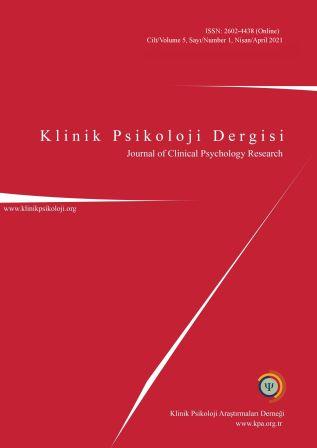
It has long been known that stressful life events are related to various psychological problems. The relationship between stress and psychiatric disorders has been further recognized due to reports of studies investigating interactions between biological and environmental factors. This paper is about the effect of stress-related environmental factors on psychopathologies through relevant biological mechanisms, such as genetic and epigenetic processes, in human body. Single-nucleotide polymorphisms and DNA methylation profiles of the genes playing role in the autonomic nervous system and the hypothalamic-pituitary-adrenal axis, which are essential for mental health and stress regulation, shed light upon gene-environment interactions in psychopathologies. Research results showing an association between early/late adversities and psychiatric problems through biological mechanisms deserve note. Relationships between genes related to stress regulation, such as CRHR1, FKBP5, CRHBP, SLC6A4, NR3C1, OXTR and BDNF, and various psychiatric conditions (e.g., depression, suicide, anxiety, bipolar disorder, personality disorders and post-traumatic stress disorder) have been suggested in an interaction with environmental factors. The number of studies reporting similar associations for therapeutic approaches to these disorders is also on the increase. Possible limitations when interpreting findings and suggestions for future research have also been discussed.
More...
Online psychotherapy is a treatment process between the therapist and the client through technological communication channels. Online therapies are very advantageous by being economically more affordable, easily accessible, eliminating the distance between the client and the therapist, and saving time for both parties. As well as face-to-face therapy, online psychotherapies can be used with different groups such as adults, children, adolescents, and families. The interest in online therapies is increasing day by day with the recognition of its positive aspects and its use in our country during the epidemic restrictions. However, comprehensive studies on the effectiveness of online therapies with children, adolescents, and families are limited in the literature. Therefore, the aim of this study was to examine the features of online psychotherapy for various client groups such as children, adolescents, families, and adults; and to reveal the effectiveness of the studies conducted with these groups. Many efficacy studies show that online therapies are effective for adults, children, adolescents, and families. Use of online therapy is rising in Turkey and it is necessary for mental health professionals to follow the development of this method nowadays. In addition, increasing the studies about the efficacy of online psychotherapies in the literature is essential for the improvement of applications in this field.
More...
This paper deals with the issue of explaining cognition in representational theories of mind and teleosemantics in particular, which is the most advanced representationalist account of mental content. The criticism of representational theories from the standpoint of embodied cognition means that the assumptions and theses of the former should be analyzed in terms of the adequacy and success of this approach The main assumption of the representational approach is the thesis that cognitive processes such as perception, conceptual thinking, knowledge, etc. rely on the creation and manipulation of mental representations. The material components of mental representations are neuronal states of the brain (e.g., neuronal stimulation patterns), which are carriers of cognitive content. The main problem with this approach is to explain the attribution of content to brain states that act as representations. Teleosemantics combines the explanation of content attribution with the intentionality of mental states and the thesis about the representational character of cognition. As a starting point, the relationships that occur between the general concept of representation and intentionality are discussed. The general structure of representation meets the conditions of intentionality both in the sense of aboutness and in the sense of referring to an intentional object. The problems to address here concern the formation of representational relations and the attribution of content to states of the brain. Next, the paper examines the solution to these problems proposed by R. Millikan in her theory of teleosemantics. She sees the source of intentionality in the biological functions of acquiring information necessary for the survival of an agent. These functions are fulfilled by relations constituting mental representations. The semantics of mental representations is given by the purpose of biological functions, whereas the truth conditions are correlated with properties of the environment. The final part of the paper is devoted to discussing the limitations of this approach and presenting a criticism from the anti-representationalist position. In turn, this will lead us to the conclusion that teleosemantics, by developing a relational understanding of representation, introduces an important element to the explanation of cognition. It combines the concept of intentionality with the representation of the world in the mind. However, it does not yet give a full an answer to the question of content attribution, nor should it be treated as the only and definitive way to solve the problem of content. Rather, teleosemantics should be regarded as one of the available proposals explaining the intentionality of mental content.
More...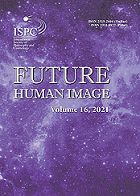
I reveal the masterful multifaceted communicative fraud that Soma Mukhopadhyay has engaged in with her profoundly autistic son Tito since 2000 on an array of major television programs, and in the presence of an array of scientists, physicians, and autism organization leaders who studied them, and which has not been observed by anyone else. Soma has deceived the public that her son has a normal if not advanced neurology and mind, and that all profoundly autistic persons may as well. She devised a variation of the treatment method and educational method that is referred to as Facilitated Communication, and refers to her method as the Rapid Prompting Method. By my having revealed the intricacy of the communicative fraud that she engages in with Tito, (a) the past, current, and future treatment methods and educational methods for autistic persons may be assessed more carefully by scientists, physicians, journalists, autism organization leaders, and others, and (b) the ways that autistic persons are conceived of may be proceeded with more carefully. I do not intend for my observational work, and ensuing conceptual work, to demonstrate to others that the particular fraud that Soma engages should be monitored for, but rather. that claims of, and demonstrations of, treatment methods and educational methods for autism be acutely visually and auditorily observed, such that the innumerable kinds of fraud that may be occurring are observed. The assessment of treatment methods and educational methods for autism with preexisting methodologies will likely result, as it did of Tito and Soma, in highly surreptitious fraud being overlooked, and perpetuated; and this entails the proliferation of mass deception.
More...
The article is based on the premise that we live in a world of ‘misguided rationalism,’ to use Husserl’s words, which deprives us of the awareness of others and of the sensitivity towards them. The article points out that the fear of losing control and the sense of helplessness are among the greatest anxieties of contemporary human beings, while their strong focus on control leads to rejection and devaluation of a typically human characteristic of tenderness. The author claims that by adopting a defensive attitude, the human being becomes distrustful and unable to experience tenderness. The main axis of the discussion is the category of tenderness proposed by Olga Tokarczuk who points to the necessity of returning to ethical contacts with others and performing acts of care towards them. Tenderness is considered as our response to weakness and suffering and thus as a turn towards humanity.
More...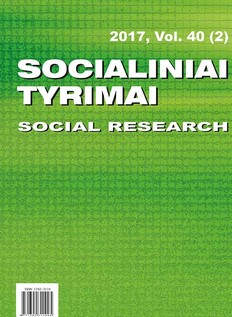
In leadership, a follower-centric approach, that emphasizes the importance of the follower in the leadership process presenting one of the latest approaches in leadership research, is considered to be one of the fields that can advance the leadership theory as well as contribute to developing more effective leadership within an organization. During the dyadic interaction between the leader and the follower, emotions play a key role and can enhance the outcomes of the leadership process as well as improve the overall performance of the organization. Despite the importance of the follower in leadership, previous studies have been paying more attention to the leader’s emotions and their influence on the follower’s performance. Moreover, these studies and leadership literature fail to explain the importance of emotions during the leader-follower interaction and do not include the most recent developments in diverse disciplines, e.g., social neuroscience, psychology. Consequently, there are gaps in literature regarding the interactions between the leader and the follower from the perspective of the exchange of emotions. A key aspect in the dyadic interaction between the leader and the follower is that the follower’s emotions can influence the leader’s emotions even though up till now leadership research has been mainly focusing on the effects of the leader’s emotions on the follower. Hence, emotions of individuals participating in the communication process are sort of exchange and influence both individuals who are taking part in communication. Literature suggests that emotional contagion develops between the interacting individuals. The emotional contagion theory has captured researchers’ from different disciplines,,e.g., psychology, neuroscience attention but is still poorly represented in leadership research and literature. The most recent literature in the field of leadership calls for research integrating perspectives and paradigms (see Anderson et al, 2008) to advance the leadership theory and contribute to more effective leadership in an organization. A need for such research is relevant due to a broad spectrum of fields of science that present the most recent and promising findings regarding the emotional contagion process and can be beneficial to the development of the leadership theory and contribute to its advancement. Based on the above, the purpose of this article is to explain the dyadic interaction between the leader and the follower through the review of diverse literature on the theory of emotional contagion in e.g., neuroscience, neuroleadership psychology and to lay out the propositions how to describe the process of emotional contagion between the leader and the follower. Analytical, interpretative and comparative research methods were used. The findings of this theoretical study suggest that follower-centric approaches vary in leadership depending on the underlying theoretical approach. Literature on follower-centric leadership emphasizes followers’ active role in the leadership process and the leader’s influence on them, affecting the outcomes of the leadership process. A follower-centric approach presents a different perception of followers as not just sole observers but also as evaluators of leadership. Furthermore, followers are considered to be the main evaluators of the leader and leadership effectiveness since leadership is not leadership unless it is recognized as one by the follower.
More...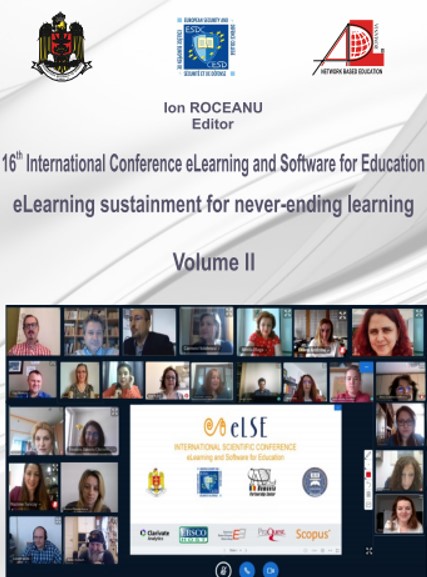
Brain-Computer Interface (BCI) is a connection path that directly connects the system of central nervous with external devices without the peripheral nerves reliance. The applications of BCI attain beyond medical applications where it used to improve the life of patients. Many achievements were established during the latest years in the prosthetics field particularly using the latest achievements of technology into these products. However, some problems have emerged in the prosthetics like being cost-expensive, difficult to install and maintain, or the need for invasive procedures. The medical issue here is the need to develop an affordable and functional prosthetic arm that has an intuitive and natural control that permits the patient to adapt effortlessly to his/her new limb. In this paper, the average band power of brainwaves is successfully extracted from the brain of the subject using the EMOTIV™ Insight headset. We intend to develop low-cost, accurate, easy to use and smart functional upper body prosthetic arm controlled by non-invasive BCI and made of lightweight materials aiming to give the patients comfortable and easiness to handle the artificial arm. The arm will be controlled through commands of the brain obtained by an electroencephalography (EEG) headset without any surgical invasion. The system will be used by the patients who will learn how to train and control the prosthetic using their brain commands. The prosthetic arm can be considered as an e-learning system for educational purposes for persons that are in touch with some medical fields such as medical students, medical engineering students, physicians, researchers, etc., who needs to study the technology of prosthetics in an easy approach and to set goals for such systems.
More...